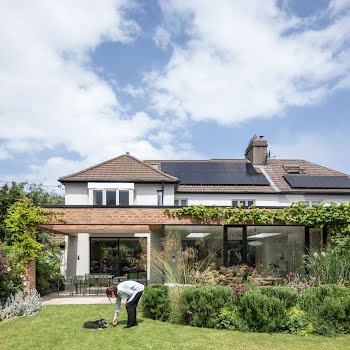
Bring some life into your home with a plant for every room, writes Vandra Costello.
Pots spilling over with greenery were a staple in a 1970s home and much like the era’s interiors, houseplants are having a renaissance. Dramatic, architectural leaves add impact to any room while soft and textured fronds dance shadows across the floor and bring a gentle movement and atmosphere to a space.
However, anyone who has introduced a plant into a room without much consideration will know just what fusspots they can be. Growing plants indoors can be tricky, with central heating and poor light being the most common wilting hazards, although over-enthusiastic watering is another frequent affliction, particularly by overeager plant parents.
If you feel your home would benefit from some greenery, there are plants that will withstand serious drought and others that just need a smattering of affection every few weeks. Below are a few tough plants that combine good looks and durability to suit every space in your home.
Living room

The living room is a great spot to grow something really spectacular. Go for a really showy plant, as big as space will allow, like a monstera. Monstera deliciosa, better known as the Swiss cheese plant for its hole-punched leaves, comes from the tropics.
In the wild, they are jungle plants that climb upwards under a huge tree canopy and with care they can grow enormous, making for a great statement plant. Because its native habitat is the rainforest, it can cope with low light levels but will need even, regular watering about once a week. If you want it to continue growing, repot it once a year and prune any new growth once you’re happy with the size.

Another big statement plant is Ficus elastica, the rubber plant. When I was growing up my aunt had an enormous specimen – it reached the ceiling and sat in an old brass jardinière. I watched fascinated as she polished its big rubbery leaves with such tenderness.
Rubber plants like light but not strong sunshine and will do well near a window but not a south-facing one. They don’t like being too dry but don’t like wet soil, so it’s best to mist them regularly instead.

If space is tighter, try something like Zamioculcas zamiifolia. Known as the ZZ Plant, it’s another exotic-looking but dead-easy customer, tolerating shade and drought. It has a very smart and tidy appearance; with parallel rows of glossy green leaves on each stalk, it grows slowly, eventually reaching about a metre in height and width. The peace lily is another good all-rounder with beautiful waxy white flowers. They don’t like direct sunlight and can be picked up very cheaply as small plants, which will quickly bulk up if you take care of them.
Hallway

Bear in mind that plants for a hallway need to be robust enough to deal with passing traffic and cope with low light levels. For my money, aspidistra is the ideal specimen. For many years these plants were regarded as symbols of dull, conformist, bourgeois respectability – think of old Etonian George Orwell’s novel Keep the Aspidistra Flying.
However, the surge in houseplant popularity has blown the dust off this beauty, helped along by the fact that aspidistras are practically indestructible, easy-to-grow plants – hence their common name, the cast-iron plant.

Aspidistras will tolerate drought yet look lush and tropical with large waxy leaves that can be a dark green paddle shape. Variations include A. elatior, with lemon-yellow spotted narrow blades; A. sichuanensis ‘Ginga’, with glowing oval spots; and A. elatior ‘Okame’ with dark green stripes.
If you’re looking for something with height, try the umbrella tree, schefflera. I can personally vouch for their hardiness as I accidentally left one outdoors for an entire winter and it survived admirably.
Kitchen

Plants can be a great addition to a kitchen, especially herbs that will bring fragrance to the room as well as flavour to the dishes. Basil will grow well under glass, so a sunny south- or south-west facing kitchen windowsill is an ideal spot.
Chives, thyme, rosemary and parsley also enjoy a sunny spot, watering and pruning them a little and often. Similarly, another sun lover suited to a kitchen is Aloe vera. They like the warmth and humidity and if you split the leaves, their soothing sap gives relief to those inevitable oven burns.

If you don’t have a bright kitchen, try shade-tolerant species such as sansevieria, or the snake plant. They like low light levels and put up with a lot, including very irregular watering. They are very exotic looking, with upright, strappy variegated leaves.
Don’t overwater as they hate to have wet roots. Sansevieria vary in size from a few centimetres to a couple of metres tall. A really fun and useful plant to grow in the kitchen is the Venus fly trap; children adore watching their toothed leaves snap shut over any fidgeting fly.
Bedroom

There was an old wives’ tale about not having plants in the bedroom, but this is nonsense. While it is true that they’re not really very good at cleaning the air (invest in an air purifier for that), they are still an excellent addition to a bedroom.
With the curtains regularly drawn, shade lovers are a good fit for this room. Philodendrons have glossy, heart-shaped leaves and come in both climbing and upright forms. They dislike direct sunlight so will grow happily in a darker room and are wonderfully undemanding.

The spider plant (Chlorophytum comosum) is an incredibly forgiving plant and if treated well, it will repay you by producing plenty of babies that can be potted on. Go all-in on the retro look and hang them in macramé potholders from the ceiling.
Water them well but allow them to dry out in between watering, they’re not a fan of soggy soil. Like orchids, spider plants prefer a semi-potbound environment so only repot them when you can see their large, fleshy roots protruding from the container.
Bathroom

The hot, steamy environment of a bathroom is the ideal place to grow some plants that love an atmosphere that mimics their naturally muggy habitat. If you are lucky enough to have a bright bathroom, this is the place to grow orchids. They love the combination of sun, heat and damp.
Asparagus fern (Asparagus aethiopicus) is not a fern at all and looks nothing like the vegetable, but is instead a delightful, airy, lacy plant that thrives in humid conditions. It sends out drooping shoots, which can grow up to two metres long making a high shelf the ideal spot where they can trail down.
Any of the true ferns such as bird’s nest (Asplenium), Boston (Nephrolepis exaltata) or staghorn ferns will also do very well in poorly lit bathrooms.
This article originally appeared in the March/April 2020 issue of IMAGE Interiors Magazine. Have you thought about becoming a subscriber? Find out more, and sign up here.



















